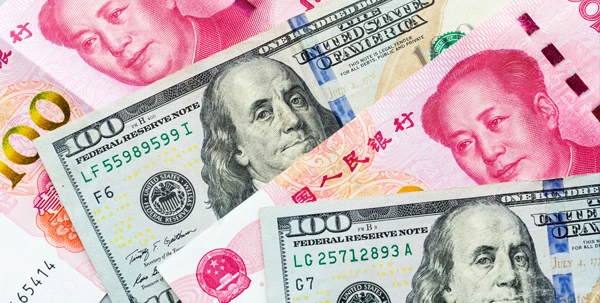- 480-597-1743


How will the U.S. navigate the shifting dynamics of trade relations with global partners like China and Mexico? Are these changes an opportunity to boost domestic industries, or could they cause new economic challenges? We aim to uncover both the potential benefits and pitfalls of these evolving relationships. In this article, we will also cover the proposals to prioritize cane sugar over corn syrup—a change that might sound small but carries wide-reaching implications for agriculture, supply chains, and even the prices we see at the grocery store?
Welcome to the third installment of SG Wealth Managers’ educational series leading up to the 2025 presidential inauguration. Today, we’ll explore these pressing questions, diving deep into the nuances of trade wars, tariffs, and global market dynamics. By the end of this article, you’ll have a clearer picture of how trade policy shapes our economy and what to watch for in the months ahead.
Trade wars occur when nations impose tariffs or other trade barriers in response to disputes, aiming to protect domestic industries or address trade imbalances. Tariffs—taxes on imported goods—can make foreign products more expensive, encouraging consumers to buy domestic alternatives. For example, tariffs on steel imports during the 2018 U.S.-China trade war increased costs for industries reliant on imported materials, such as automotive and construction, leading to higher prices for end consumers. However, these measures often carry unintended consequences, including retaliatory actions from other countries. While these challenges are notable, trade policies can also open opportunities for strengthening domestic industries, fostering economic independence, and recalibrating global trade relationships. Ultimately, the strategy and execution of these policies play a pivotal role in determining their effectiveness.
The continuation of tariffs from the previous administration, even under President Biden, reflects a strategic decision rooted in protecting domestic industries and addressing trade deficits. These tariffs were retained to prevent a sudden disruption in industries that had begun adjusting to the new trade environment. They also provided leverage in ongoing trade negotiations with major partners like China and reinforced a commitment to supporting American manufacturing and agriculture. While controversial, the tariffs spurred modest growth in domestic production and contributed to job retention in key sectors, showcasing their value as a tool for stabilizing and recalibrating the U.S. economy.
As President Trump’s administration signals plans for increased tariffs, several questions arise. While these policies aim to boost domestic production and address trade deficits, they could also lead to economic ripple effects:
One intriguing aspect of the administration’s trade focus is a proposed pivot from corn syrup to cane sugar. This shift is rooted in concerns about health and consumer preferences, as cane sugar is perceived as a more natural alternative to heavily processed corn syrup. Additionally, the administration sees an opportunity to support domestic sugar producers and reduce reliance on subsidized corn. However, given that cane sugar production is geographically limited and largely reliant on imports from Mexico, this policy shift could introduce challenges, including potential trade disputes and supply chain disruptions. On the surface, this might seem like a niche agricultural policy, but its implications are broad:




The Smoot-Hawley Tariff Act of 1930 offers a cautionary tale about the consequences of overly aggressive trade policies. Passed at the height of the Great Depression, the act aimed to shield American farmers by imposing steep tariffs on imported goods. At first, it seemed like a lifeline for struggling agricultural communities, promising to protect their livelihoods from cheaper foreign imports. However, the optimism was short-lived.
Trading partners swiftly retaliated with tariffs of their own, closing off international markets to American exports. U.S. farmers and manufacturers, who had relied heavily on global trade, found themselves cut off from vital customers. For instance, wheat and cotton, two staples of U.S. agricultural exports, saw their prices plummet as demand evaporated. Similarly, industries like automotive manufacturing faced devastating losses as the cost of imported raw materials soared and export opportunities dwindled.
The ripple effects extended far beyond the industries initially targeted by the act. As international trade volumes declined by more than 50%, economic activity across the country slowed to a crawl. Small businesses, which depended on the vibrancy of both local and global commerce, shuttered their doors. The resulting economic contraction deepened the Great Depression, leaving an enduring legacy of hardship.
This historical episode underscores the importance of balancing protectionist measures with a recognition of the interconnected global economy. It serves as a reminder that while trade policies can provide immediate benefits for some, they often carry complex long-term consequences that must be carefully managed.
Modern trade strategies must carefully balance domestic interests with the interconnected realities of the global economy to avoid similar pitfalls.
The administration’s trade policies also raise questions about key relationships with Mexico and Canada, as well as other global partners:
While tariffs can offer immediate protection to domestic industries, their long-term effects are influenced by the broader economic context. For instance, during the 1980s, in response to voluntary export restraints and potential trade barriers, Toyota, a Japanese company, established manufacturing plants in the U.S. This strategic move allowed Toyota to avoid import restrictions and contributed significantly to local job creation and economic development. By producing vehicles domestically, Toyota not only strengthened its presence in the U.S. market but also helped stabilize prices for American consumers over time, demonstrating the complex interplay of international trade strategies. Initially, the auto industry experienced inflationary pressures as vehicle prices spiked due to limited supply and higher costs. However, as domestic production increased and supply chains adapted, vehicle prices began to stabilize, highlighting the long-term benefits of localized manufacturing.
That said, this example does not guarantee that all tariffs will yield similar results. The effectiveness of tariffs depends heavily on the strategic goals behind their implementation and their alignment with broader economic policies. Tariffs require careful planning and bipartisan support to ensure they remain in effect long enough to realize their intended benefits while minimizing potential harm. When misapplied or left unchecked, tariffs can exacerbate economic challenges rather than resolve them. As such, their use must be evaluated on a case-by-case basis, balancing both short-term impacts and long-term objectives.
Stay tuned for tomorrow’s article, where we’ll explore the potential tax changes under the new administration and their implications for investors and the broader economy.
Trade policy is a powerful economic tool, capable of reshaping industries, influencing prices, and affecting global relationships. As new policies take shape, understanding their implications is crucial. At SG Wealth Managers, we strive to provide clear insights to help you stay informed during these uncertain times.
This article is for informational purposes only and does not constitute financial advice. Always consult your financial advisor to understand how these trends may affect your unique situation.
If you have questions about how trade policies might affect your financial strategy or broader economic implications, reach out to your advisor. Together, we can explore how to position your portfolio to navigate these changes and align with your long-term objectives.
Stay tuned for tomorrow’s article, where we’ll explore the potential tax changes under the new administration and their implications for investors and the broader economy.
Disclosure: This is an informational article and should not be taken as financial advice. Always contact your financial advisor to understand how these trends may affect your specific situation. SG Wealth Managers does not take any political sides, and as such, will not make any commentary that is political in nature; rather, this is strictly an economic and financial discussion. Neither the information nor any opinion expressed comprises a solicitation for the purchase or sale of any security. This content is directed exclusively for the purpose of general education.


I am the CEO of SG Wealth Managers, a registered investment advisory firm. One of my favorite things to do is learn something new every week, whether about investing or another subject.
The estate services team for SG Insurance & Estate Services, LLC assists with providing general education services for estate planning, asset protection, legacy planning, and tax strategies. SG Insurance & Estate Services is not a law firm, cannot give legal advice, and does not prepare legal documents. For legal advice and/or representation, all clients are able to consult separately with an estate planning attorney or law firm.